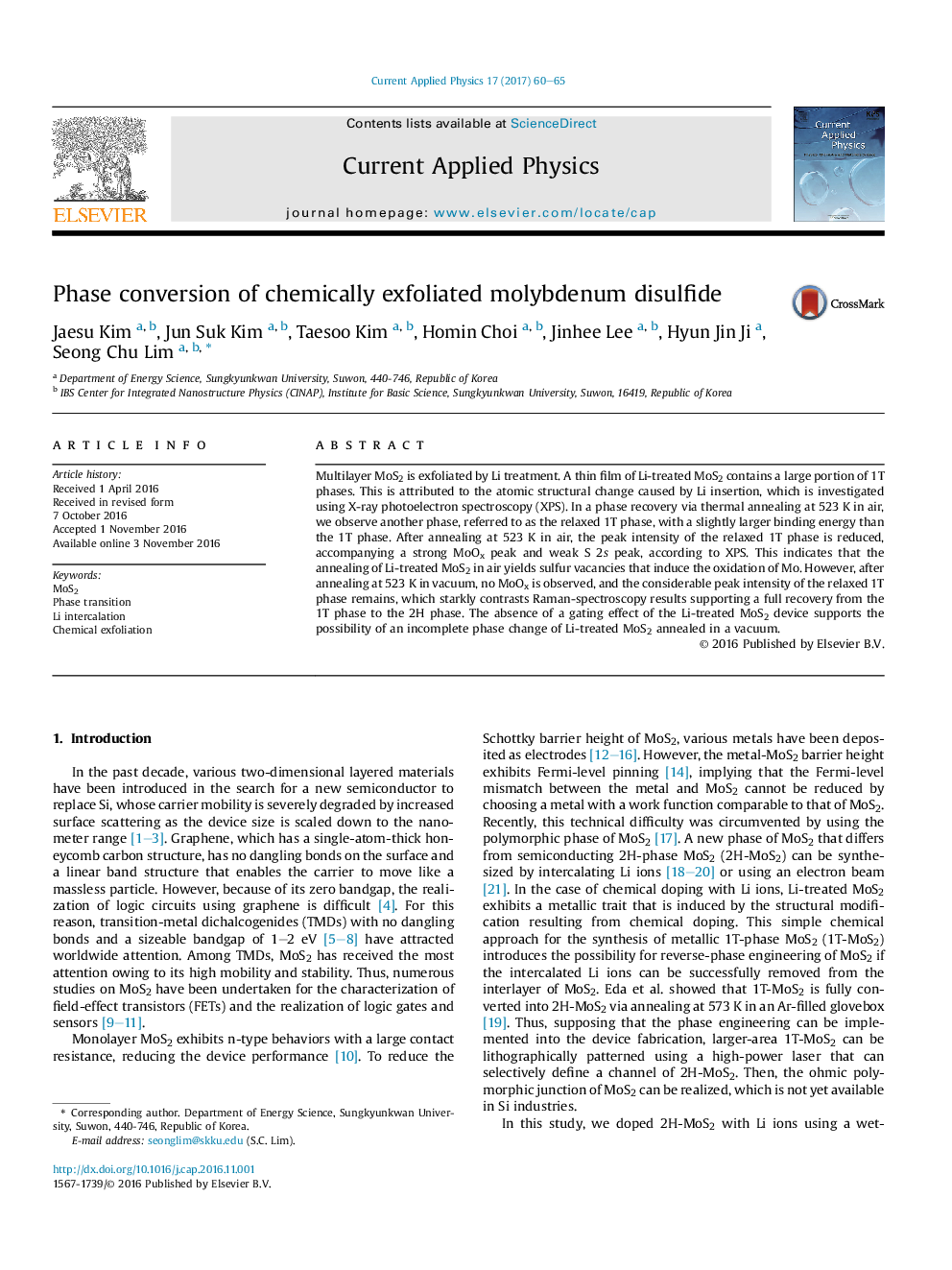| Article ID | Journal | Published Year | Pages | File Type |
|---|---|---|---|---|
| 5489025 | Current Applied Physics | 2017 | 6 Pages |
Abstract
Multilayer MoS2 is exfoliated by Li treatment. A thin film of Li-treated MoS2 contains a large portion of 1T phases. This is attributed to the atomic structural change caused by Li insertion, which is investigated using X-ray photoelectron spectroscopy (XPS). In a phase recovery via thermal annealing at 523Â K in air, we observe another phase, referred to as the relaxed 1T phase, with a slightly larger binding energy than the 1T phase. After annealing at 523Â K in air, the peak intensity of the relaxed 1T phase is reduced, accompanying a strong MoOx peak and weak S 2s peak, according to XPS. This indicates that the annealing of Li-treated MoS2 in air yields sulfur vacancies that induce the oxidation of Mo. However, after annealing at 523Â K in vacuum, no MoOx is observed, and the considerable peak intensity of the relaxed 1T phase remains, which starkly contrasts Raman-spectroscopy results supporting a full recovery from the 1T phase to the 2H phase. The absence of a gating effect of the Li-treated MoS2 device supports the possibility of an incomplete phase change of Li-treated MoS2 annealed in a vacuum.
Related Topics
Physical Sciences and Engineering
Physics and Astronomy
Condensed Matter Physics
Authors
Jaesu Kim, Jun Suk Kim, Taesoo Kim, Homin Choi, Jinhee Lee, Hyun Jin Ji, Seong Chu Lim,
